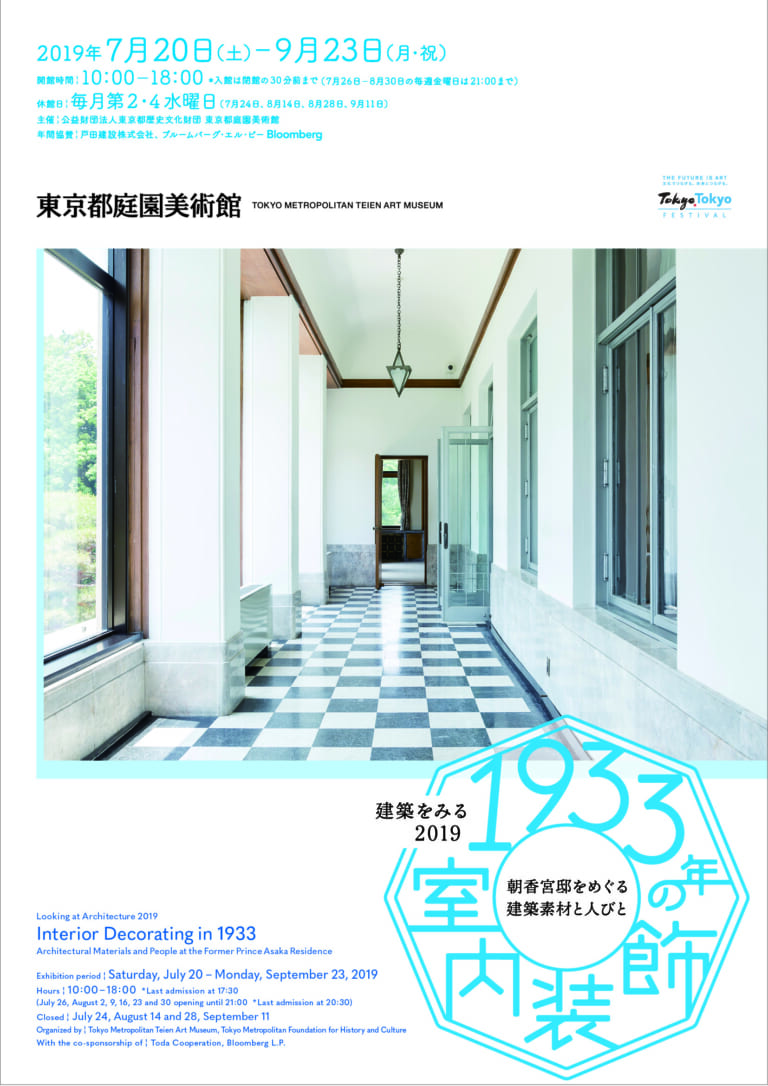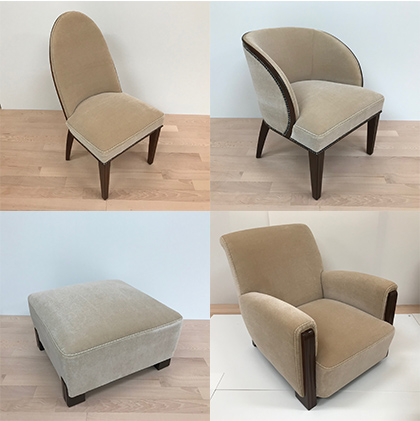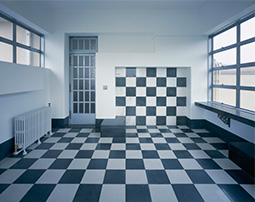Discover the charm of Prince Asaka’s Residence through its materials
Once per year, the Teien Art Museum hosts an exhibition to showcase the architectural beauty of our building, the Former Prince Asaka Residence, completed in 1933. This year’s exhibition focuses on elements of the interior design—wood, stone, tiles, wallpaper, and furniture—and introduces the materials and craftsmanship, as well as the carpenters and companies involved in construction, by drawing upon construction specification manuals, catalogs, and other documents from the time. This exhibition aims both to highlight the work of Japan’s artisans, and offer a new way of seeing and enjoying the architecture of this cultural property.
Former Residence of Prince Asaka

The Asaka branch of the imperial family was founded in 1906 by Prince Yasuhiko, the eighth son of Prince Kuni Asahiko. In 1922, while serving at the Military Staff Col lege, Prince Yasuhiko went to France to study military affairs. After he was injured in a traffic accident there, his spouse, Princess Nobuko, joined him, and together they remained in France until 1925. Their stay coincided with the golden age of Art Deco in France. Fascinated by the beauty of Art Deco, the prince and princess decided to incorporate its glories into their new residence, for which they commissioned the French artist Henri Rapin to design the interiors of the principal rooms. The architect in charge of designing the building, Gondo Yokichi of the Works Bureau of the Imperial Household Ministry, had been a passionate student of modern architecture while training in Europe. The superb craftsmanship long cultivated in Japan was, moreover, utilized in every aspect of its construction.
The Prince Asaka Residence is, thus, itself a work of art, the result of the enthusiasm of the prince and princess and the combined abilities of Japanese and French designers, architects, and craftsmen.
While it is now used as a museum, no significant changes have been made to its interior. A valuable historic structure that accurately embodies the Art Deco style and provides a glimpse of receptivity to other cultures that flourished in Tokyo in the early Showa period, the residence has been designated as one of the Japanese nation’s Important Cultural Properties.





